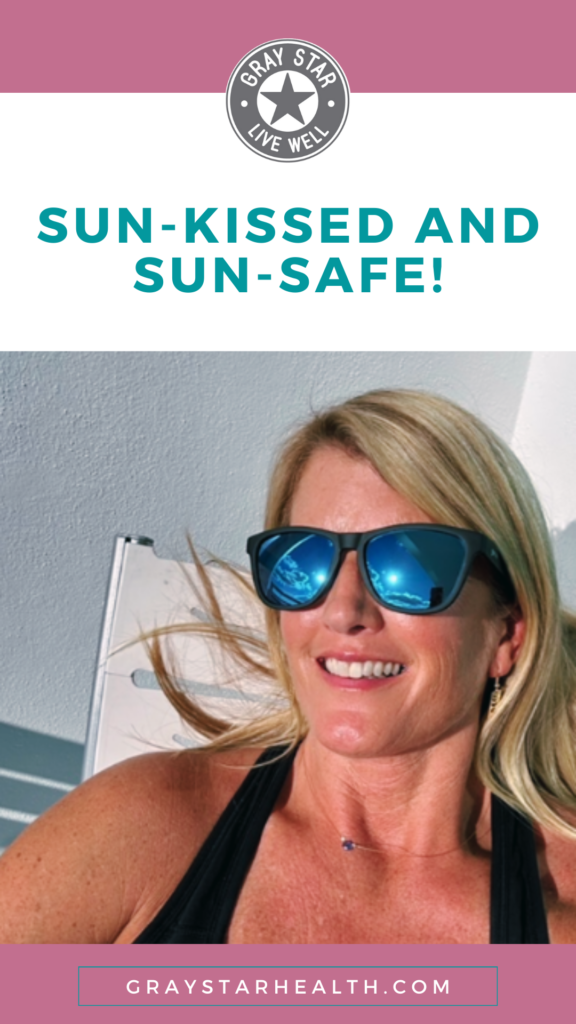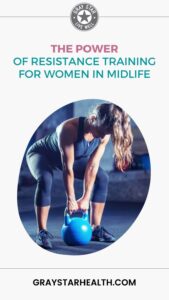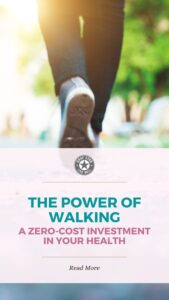The topic of sun exposure can get really confusing, so I want to shed some “light” on this important and nuanced conversation. Is sun really the enemy? Why are cancer rates still rising despite more sunscreen use and reduced sun exposure. Let’s start with the basics.
Sunlight & Vitamin D
Vitamin D, often referred to as the “sunshine vitamin,” plays a vital role in your overall health. It is essential for maintaining healthy bones and teeth, supporting immune function, regulating insulin sensitivity, supporting healthy hormones and regulating mood. The body naturally produces vitamin D when skin is exposed to sunlight, making sun exposure a key factor in achieving optimal levels of this nutrient.
When your skin is exposed to sunlight, the sun’s ultraviolet B (UVB) rays hit cholesterol in the skin cells, providing the energy for vitamin D synthesis to occur. Sun exposure is by far the best way to boost vitamin D levels as very few foods contain sufficient amounts of this important vitamin.

UV Protection / Sunscreen
While the sun provides numerous benefits and is great for Vitamin D production, it’s important to remember that overexposure to ultraviolet (UV) rays can damage our skin, leading to sunburn, premature aging, and increasing the risk of skin cancer. This is where sunscreen becomes an important ally. Using sunscreen helps in the following ways:
- UV Protection – sunscreen acts as a barrier, shielding our skin from UV rays that can cause sunburn and cell damage.
- Preventing Premature Aging – regular use of sunscreen can help minimize the appearance of wrinkles, fine lines and age spots that are caused by prolonged sun exposure.
How do you find a healthy balance between getting adequate sun exposure and protecting your skin from UV damage?
Getting sufficient vitamin D while avoiding the risks of excessive UV exposure requires a mindful approach. This approach will be different for everyone based on age, skin color, amount of time in the sun and many other lifestyle and nutrition factors, but here are a few helpful strategies!
Time Management – In order to produce vitamin D, you will need to exposure your skin, without sunscreen, to sunlight. Time of day, how much skin is exposed and the amount of time you are in the sun are factors to consider.
Start with a few minutes at a time, depending on how sensitive your skin is, and apply sunscreen or cover up before burning. Midday is the best time to get vitamin D. The sun is at its highest point and UVB rays are most intense. Your body may manufacture vitamin D most efficiently around this time and you may need less time in the sun.

You should expose roughly 1/3 of your skin (vitamin D is made from cholesterol on your skin), you don’t need to be exposed for hours at a time. Most research recommends wearing a tank top and shorts for 10-30 minutes three times per week during the summer to make adequate amounts of Vitamin D. This will vary from person to person. Darker skin will require longer exposure.
During the rest of the day, you can protect your skin by covering up – shade, umbrella, sunglasses, hats, long sleeves – and with safe sunscreen. Keep in mind, that sunscreen all day, every day will block your skin’s ability to produce Vitamin D, so finding that balance is important.
Non-toxic Sunscreen – There are two kinds of sunscreen – physical and chemical. Physical sunscreens (the good guys) contain mineral ingredients that sit on the skin and deflect harmful rays. Most chemical sunscreens, on the other hand, contain endocrine disrupting chemicals that absorb into your skin and can contribute to hormone imbalances, allergies and even cancer. In addition to parabens and phthalates, here are sunscreen ingredients to AVOID:
- Avobenzone
- Oxybenzone
- Dioxybenzone
- Octocrylene
- Octinoxate
- Homosalate
- Octisalate
Here’s my favorite sunscreen right now and why: doTERRA sun Body Mineral Sunscreen Spray

This is a mineral-based sun protection spray ( oxybenzone, paraben, and phthalate-free) that delivers incredible benefits to your skin. It’s formulated with non-nano zinc oxide (which means it doesn’t absorb into your skin and get into your bloodstream) making this kind of sunscreen the safest on the market. It also delivers lightweight SPF 30 UVA/UVB broad-spectrum protection.
It has plant-based ingredients like aloe vera and vitamin E—coupled with a blend of CPTG® essential oils, including Frankincense, Helichrysum, and Carrot Seed. This sunscreen spray provides nourishment to the skin from head to toe! It’s for everyday use by every age.
doTERRA actually has a whole line of incredible sunshine-related products! I put together a few of my favorites into a Summer Sun Bundle for you here! You’ll get all four products in the bundle for 25% off when you create a free account with your order. Or you can just order the Sunscreen Spray and you’ll get that for 25% off too.

Nutrition play an important role too – Another part of healthy sun exposure that gets overlooked is nutrition. Did you know that consuming inflammatory fats, lots of sugar and alcohol can make your more prone to sun burn and skin damage? Consider the fact that often the very foods and beverages (chips, sugary snacks, soda and alcohol) being consumed while in the sun can also be weakening our internal defenses, making it easier to damage our skin.
Your body needs the right building blocks to support healthy skin and reduce inflammation, especially if you are spending time in the sun. Getting nutrient dense foods high in micronutrients and antioxidants from fruits and vegetables, omega 3s and other healthy fats is important. Supplementing Vitamin C, Omega 3’s and Astaxanthin can also support the skin from the inside out. What you eat matters when it comes to sun exposure!
Go ahead and check out my Sunshine Support Supplements for summertime sun support. You’ll find it in my Fullscript Supplement Dispensary where you always get 10% off all your orders and free shipping over $50. In order to access the protocols you’ll have to create an account.

Final thoughts – Getting sufficient vitamin D while avoiding the risks of excessive UV exposure requires a mindful approach. This approach will be different for everyone based on age, skin color, amount of time in the sun and many other lifestyle and nutrition factors, But it’s worth it when you are able to find the right balance.
I don’t avoid the sun, but rather make a point to get sun exposure every day. I don’t get burnt and make sure to get out of the sun or cover up when I have had enough. I stay hydrated, consume healthy foods and supportive supplements. And if I’m going to be outside for extended periods of time, I use doTERRA non-toxic sunscreen!









